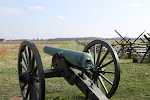Toma Lodge in Ruston is a quiet upscale neighborhood of fine homes, towering pine trees, and well manicured lawns. Right away, visitors note the subdivision is unlike most contemporary growth in which lots are razed to facilitate construction and then replanted with spindly trees and shabby shrubs, giving the landscape an artificial look. In Toma Lodge, it is clear the homes were planted carefully around century-old trees in a park-like setting. Toma Lodge looks like a park because it served as a semi-private natural sanctuary for decades.
Toma Lodge Estates and the adjacent Christ Community Church lay on land with a history that would surprise most of the neighborhood’s residents and the church’s members. Around the turn of the 20th Century, thousands gathered each summer on the grounds now occupied by expensive homes and a beautiful house of worship for sessions of the Louisiana Chautauqua. Among them were the most prominent politicians, religious leaders and public speakers in the nation.
The Chautauqua Society was founded in New York in 1874 with the goal of providing educational enrichment and inspiration in a picturesque natural setting. It was much like a summer camp offering a mixture of education, religion and recreation. The Chautauqua movement spread quickly across the United States as 45 states established Circuit Chautauquas that offered lectures, music, speeches and plays in rural and small-town America. In 1889, the Louisiana Educational Association voted to establish a Louisiana Chautauqua on a 15-acre tract just north of the outskirts of the fledging railroad town of Ruston.
Ruston was selected for the state's Chautauqua because of its gently rolling hills, forest scenery and peaceful setting as well as enthusiastic local support for the endeavor. In a report of its 1889 decision, the leaders of the Louisiana Educational Association noted the “refined culture of [Ruston’s] people, their public spirit, their hospitality, their intense interest in all forms of thought and learning showed that they would give generous, united and untiring support to such an institution.” When Ruston was founded in 1884 with the coming of the railroad, it had attracted some of the best educated community leaders from regional towns bypassed by the new line. By the time the Chautauqua was created, Ruston already boasted a small college—Ruston College—an opera house, and other cultural endeavors.
Thomas. D. Boyd, President of the Louisiana Educational Association, wrote in a circular letter in April 1891 that Northern Louisiana was renowned for its “healthfulness and pleasing rural scenery." Since the Chautauqua programs were held during the summer, the region also offered an escape from the oppressive southern Louisiana heat. The Ruston site encompassed a number of “mineral springs,” offering visitors what were purported to be “healing waters.” A large two-story hotel, named the Chautauqua Springs, was erected along with cottages and an outdoor auditorium with a capacity of 2,000.




















